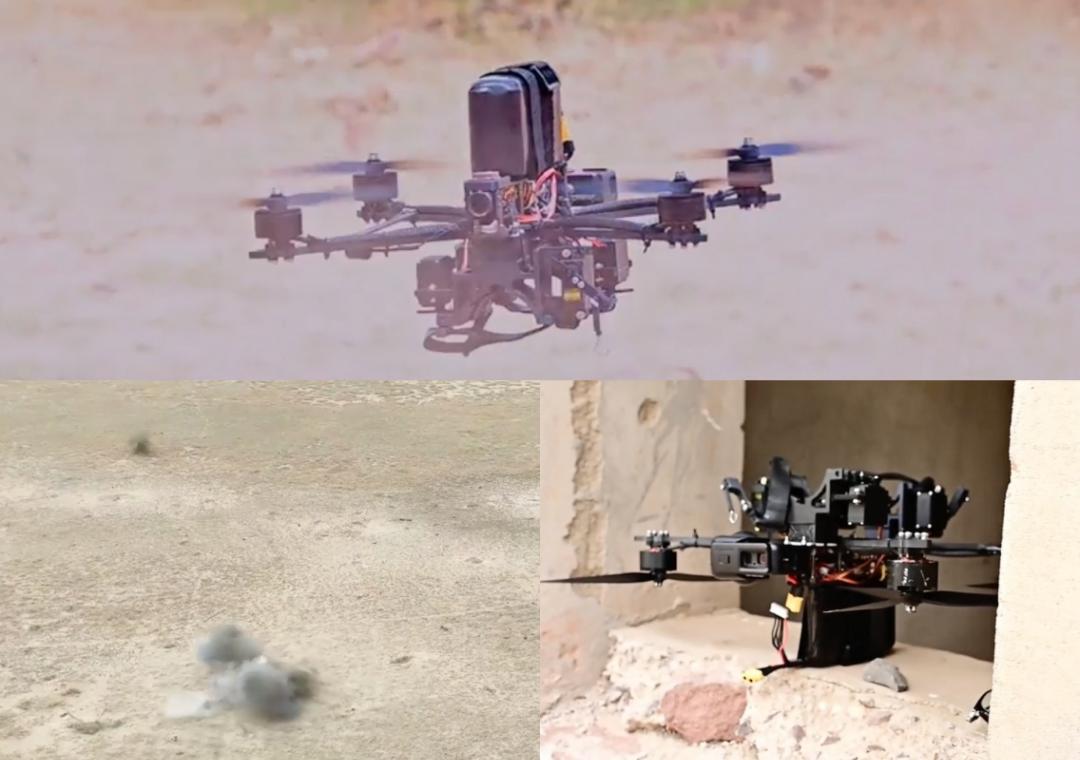
Guj Engineer Develops Drone Capable of Grenade Attacks up to 5 km, Army Buys 20 Units
In a breakthrough innovation in the field of drone warfare, Ahmedabad-based engineer Keshavkant Sharma has developed an automated grenade detonation drone, “Gati”, which can carry out precision grenade attacks up to five kilometers and safely return after the detonation. The Indian Army has reportedly ordered over 20 units of this revolutionary drone, marking a significant milestone in the country’s efforts to enhance its defense capabilities.
Gati, which translates to “speed” in Hindi, is a remarkable achievement of Keshavkant Sharma, a young engineer from Ahmedabad, Gujarat. The drone is designed to precision-drop grenades and then remove the pin and release the lever, which was previously a manual task. This automated feature makes the drone more efficient, reducing the risk of human error and increasing the effectiveness of the attack.
According to Sharma, the idea behind Gati was to create a drone that could carry out precision attacks without putting human lives at risk. “We wanted to create a system that could accurately deliver the grenade and then safely return without any human intervention,” he explained in an interview. “Gati is a game-changer in the field of drone warfare, and we are excited to see its potential in various military applications.”
The Gati drone is equipped with advanced navigation systems, including GPS and sensors, which enable it to accurately target the enemy. The drone is also powered by a high-efficiency battery, allowing it to stay airborne for extended periods. Additionally, the drone’s autonomous system enables it to adapt to changing environments and respond to unexpected situations.
The Indian Army’s decision to order over 20 units of Gati is a testament to the drone’s potential in modern warfare. The army has been actively exploring the use of drones for various applications, including reconnaissance, surveillance, and precision attacks. The Gati drone’s ability to carry out precision grenade attacks at a distance of up to five kilometers makes it an attractive option for the army.
The development of Gati is also a significant milestone in India’s efforts to indigenize its defense capabilities. The country has been actively promoting the development of indigenous defense technologies, and Gati is a prime example of this initiative. The drone’s development is a result of collaboration between Sharma’s company and the Indian defense establishment, highlighting the potential for public-private partnerships in defense innovation.
Gati’s potential applications are numerous, and it has the potential to revolutionize the way armies operate on the battlefield. The drone’s ability to carry out precision attacks at a distance without putting human lives at risk makes it an attractive option for armies around the world. Additionally, the drone’s automated system makes it an ideal option for situations where human intervention is not possible or desirable.
In conclusion, the development of Gati is a significant achievement in the field of drone warfare, and its potential applications are numerous. The Indian Army’s decision to order over 20 units of Gati is a testament to the drone’s potential in modern warfare, and it highlights the potential for public-private partnerships in defense innovation. As the drone is deployed on the battlefield, it is likely to have a significant impact on the way armies operate and will likely become a key component of military strategy in the years to come.






